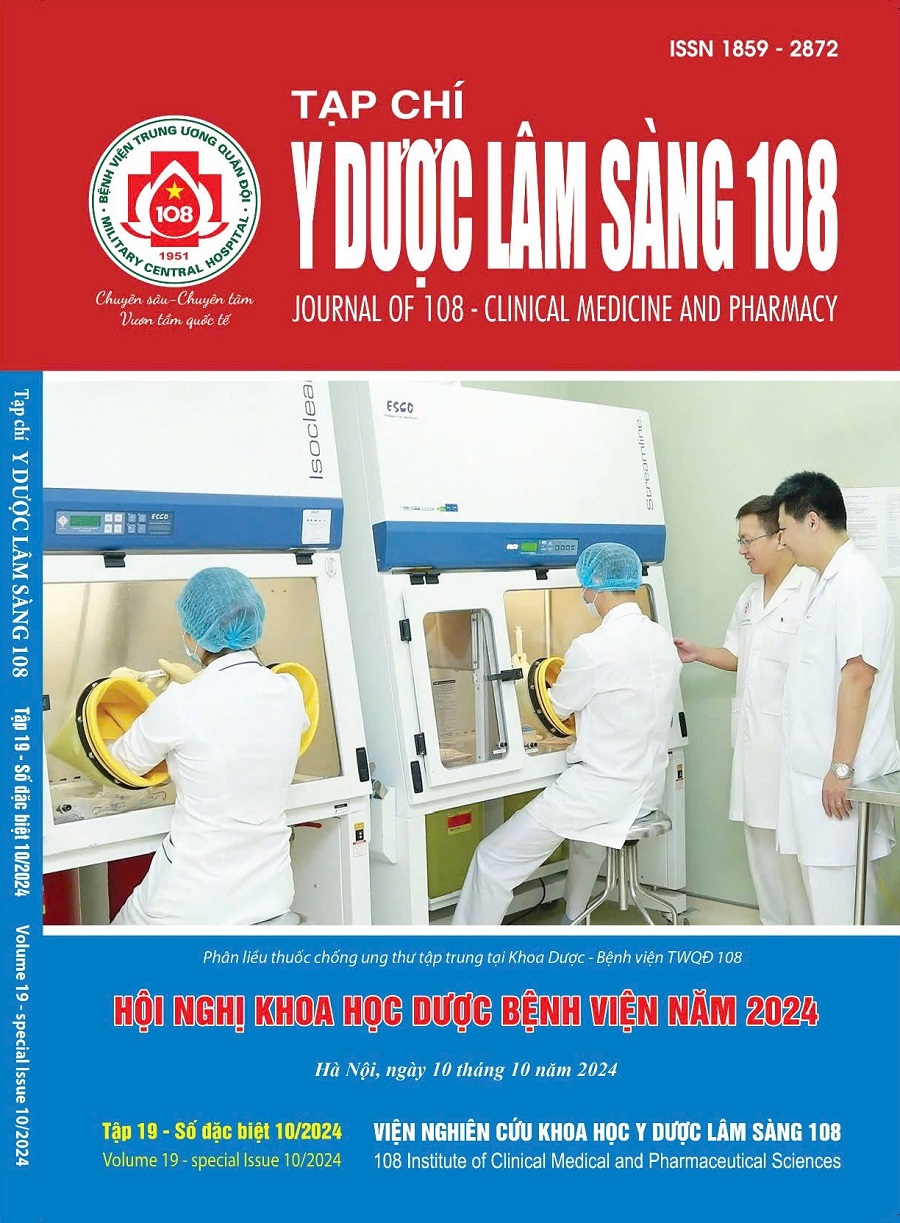Perspectives on key performance indicator of Pharmacy Department staff at 108 Military Central Hospital
Main Article Content
Keywords
Abstract
Objective: The objective of the study was to identify the perception of Key Performance Indicators (KPI) of Pharmacy department staff at 108 Military Central Hospital. Subject and method: A cross-sectional study was conducted from March 2024 to April 2024. The self-administered questionnaire included 2 parts: Demographic characteristics and the perception of KPI. Result: Eighty-eight pharmacy department staff completed the survey. 84.1% of participants heard about KPI. Participants also had a certain general awareness about KPI, however some statements requiring specialized knowledge about this indicator had a lower level of perception (just under 56%). Participants highly appreciated the importance and necessity of KPIs with 100% of the statements having an average consensus score. The most challenging issues of KPIs were difficulty in developing a set of KPI that evaluate work quality accurately (79.5%) and evenly among departments, and only focusing the effort on indicators used to eveluate KPIs (52.3%). Conclusion: Developing KPIs to evaluate performance at the individual and department levels is neccessary. However, the challenges should be addressed before implementing KPIs to evaluate the performance of hospital pharmacy departments.
Article Details
References
2. National Healthcare Quality and Disparities Report (2015) Chartbook on Health Care for Blacks [Internet]. Rockville (MD): Agency for Healthcare Research and Quality (US); 2016 Feb. Available from: https://www.ncbi.nlm.nih.gov/books/NBK581098/
3. Bệnh viện Nhi Đồng thành phố (2024) Bệnh viện Nhi Đồng Thành Phố áp dụng hệ thống KPI đánh giá hiệu quả công việc. Accessed: Jul. 12, 2024. [Online]. Available: https://bvndtp.org.vn/benh-vien-nhi-dong-thanh-pho-ap-dung-he-thong-kpi-danh-gia-hieu-qua-cong-viec/.
4. Bệnh viện Đại học Y Dược (2024) Bệnh viện Đại Học Y Dược. Accessed: Jul. 12, 2024. [Online]. Available: https://benhviendhyd.vnu.edu.vn/tin-tuc/benh-vien-dai-hoc-y-duoc-ap-dung-he-thong-kpi-tron-20240315020020544
5. Health Information and Quality Authority (2013) Guidance on developing Key Performance Indicators and Minimum Data sets to monitor healthcare Quality.
6. David Parmenter (2010) Key Performance indicators (KPI): Developing, Implementing, and Using winning KPIs, Second. John Wiley & Sons, Inc.
7. Tạ Huy Hùng (2018) Nhận thức của nhà quản trị về chỉ số đo lường hiệu suất cốt yếu trong doanh nghiệp nhỏ và vừa Việt Nam. Tạp chí Khoa học Đại học Quốc gia Hà Nội: Kinh tế và Kinh doanh 1(34) tr. 66-75.
8. Lloyd GF, Singh S, Barclay P, Goh S, and Bajorek B (2017) Hospital pharmacists’ perspectives on the role of key performance indicators in Australian pharmacy practice. Journal of Pharmacy Practice and Research 47(2): 87-95. doi: 10.1002/jppr.1156.
9. Minard LV, Deal H, Harrison ME, Toombs K, Neville H, and Meade A (2016) Pharmacists’ Perceptions of the Barriers and Facilitators to the Implementation of Clinical Pharmacy Key Performance Indicators. PLoS One 11(4): 0152903. doi: 10.1371/journal.pone.0152903.
 ISSN: 1859 - 2872
ISSN: 1859 - 2872
